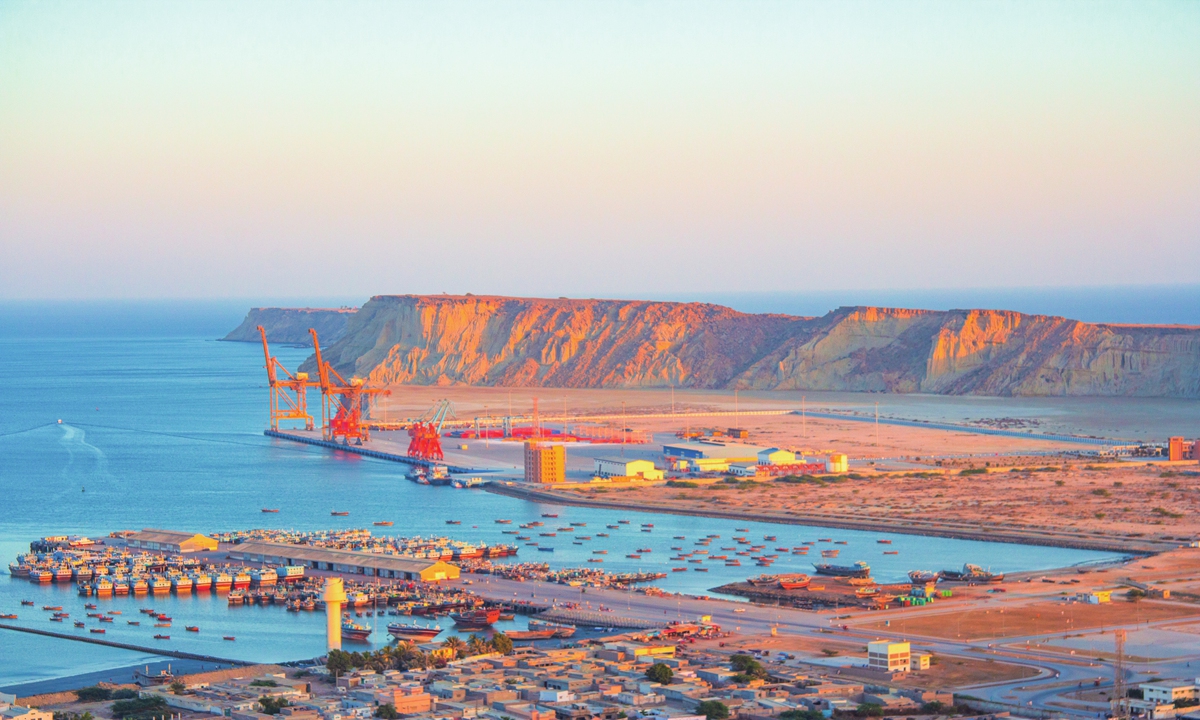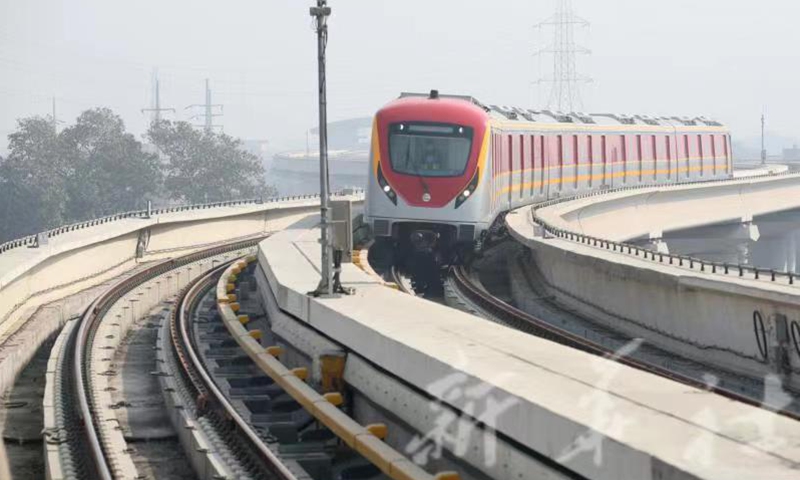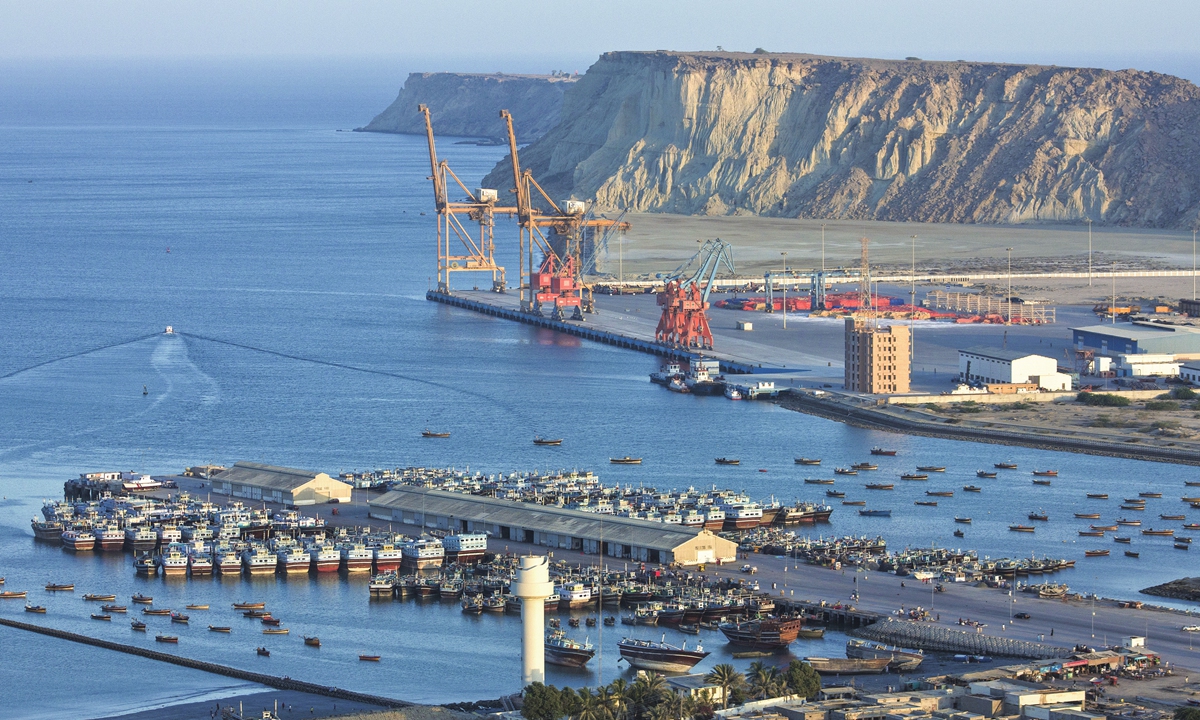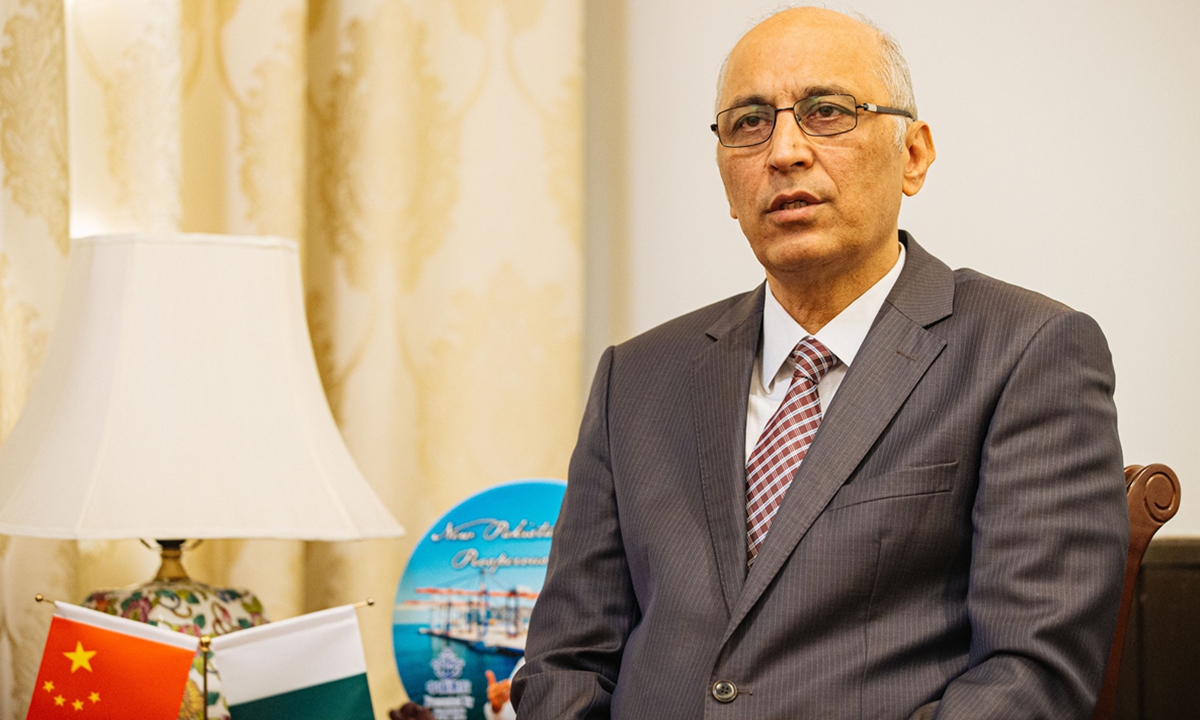India should have 'a second thought' on participating BRI, otherwise it could lose excessively: Pakistani scholar
CPEC boosts connectivity, acts as a gateway to Central Asia: Pakistani scholar

A view of the Gwadar Port Photo: VCG
Editor's Note:
This year marks the 10th anniversary of the China-proposed Belt and Road Initiative (BRI), a global cooperation platform that demonstrates China's vision for global development and offers solutions to the reform of the global governance system and multi-faceted challenges. Against this backdrop, the Global Times is publishing a series of interviews with renowned scholars, think tanks, and financial institutions, sharing their insights and understanding of how this initiative has earned global recognition and growing esteem. This is the ninth installment in the series.
Recently, Global Times reporter Li Xuanmin (GT) conducted an interview with Yasir Habib Khan (Khan), president of Institute of International Relations and Media Research in Pakistan. The interview scoped the monumental development of China-Pakistan Economic Corridor- a flagship BRI project - in the past 10 years, and how it boosts regional connectivity and integration. He also suggested that India give second thought and consider joining the BRI, which is in line with its development goals. Otherwise the South Asian economy could lose excessively and have difficulty sustaining its high GDP growth.
GT: China and Pakistan have jointly held the Decade of China-Pakistan Economic Corridor (CPEC) celebrations this week. This year also marks the 10th anniversary of the Belt and Road Initiative (BRI). What is your evaluation of the development of the CPEC under the China-proposed initiative?
Khan: Before the launch of the CPEC, a signature project of BRI envisaged in 2013, Pakistan was hankering for economic survival, languishing into energy crisis, poor infrastructure and financial challenges. The CPEC came to rescue. Within the span of 10 years, initiative augured well, transforming Pakistan on the path of development and prosperity.
From 2013 to 2022, the CPEC had brought $25.4 billion in direct investment to Pakistan and created about 236,000 jobs there. It helped Pakistan generate 8,000 megawatts of electricity and build 510 kilometers of national highway. Through transport infrastructure, CPEC Orange Line Metro Train, South Asia's first electric intercity train, is providing modern commutation to millions of residents of Lahore, emerging economic hub of Pakistan.
One of the watershed developments during 10 years is the operation of Gwadar Port, crown jewel of the CPEC. Gwadar port was once an old fishing town. Now it is on high tide of success with modern progress and socio-economic development.
It has also been paying tangible contribution in road connectivity through western and eastern alignments, offering a link between Gwadar to Northwest China's Xinjiang Uygur Autonomous Region.
GT: The construction of the CPEC has achieved noteworthy results during its first phase. What will be the focal point in the second phase of the CPEC?
Khan: During Chinese Vice Premier He Lifeng's latest 3-day visit to Pakistan to celebrate the CPEC's 10th anniversary in Islamabad, Pakistan Prime Minister Shehbaz Sharif said that the CPEC was entering its second phase.
The visit is set to usher in more workouts to enhance bilateral economic and financial cooperation; advance high-quality development of the CPEC; and explore new avenues for strengthening trade and investment ties between the two countries. During He's visit, China and Pakistan on Monday signed six agreements for the promotion of bilateral cooperation involving knowledge sharing, trade, infrastructure construction and workforce exchange program.
After completing successful first phase of the CPEC that revolutionized Pakistani economy through much-needed energy and infrastructure projects, new CPEC corridors get underway that also should be the focus of attention. Those include the CPEC agriculture corridor, science and technology corridor, IT corridor, digital corridor, modern industrial corridor, health corridor, education corridor. Pakistan's future hinges on execution of these planned new CPEC corridors.
Another upcoming focus should be to extend the CPEC to Afghanistan to take regional connectivity in South Asia and Central Asia to its best. It would also help the landlocked country to become a center of trade and attract investment.

Photo taken on October 24, 2020 shows an Orange Line metro train pilot test run in Pakistan's eastern city of Lahore. The Orange Line Metro Train project is one of the CPEC early-harvest projects. Photo: Xinhua
GT: The CPEC is a flagship BRI project. With the advancement of the China-proposed initiative in the past decade, how would the corridor, along with other BRI projects, facilitate regional connectivity?
Khan: Being integral and pioneering part of the BRI, the CPEC is equipped with profuse potential to foster shared goals of development and prosperity especially among beneficiary countries and regions along BRI routes.
In this perspective, the CPEC is good omen for those neighboring countries along the BRI routes, like Central Asia, in terms of connectivity.
Central Asia is rich in natural resources like petrol, natural gas, coal and iron and commodities but the capitalization of this economic potential is deterred by its landlocked geographical features. For a desirable volume of international trade, access to sea routes is imperative. Here comes the CPEC as a gateway to Central Asia, with Gwadar port in the Balochistan province of Pakistan offering Central Asian economies the shortest route to sea. It presents a strategic opportunity for Central Asia to transport their goods more easily and gain competitiveness in regional and global markets.
It is also pertinent to understand that in South Asia, countries such as Bangladesh and Sri Lanka are all active participants in the China-proposed BRI.
For example, Sri Lanka's Hambantota and Colombo ports are also flagship BRI projects in South Asia. Sri Lankan ports can be used as a regional maritime hub between South Asia, Southeast Asia, Central Asia, the Middle East, and East Africa. That in turn gives an additional important connectivity route via the CPEC - from Pakistan's Gwadar through to Central Asia, and Central and Western China.
GT: What effect has the decade development of the CPEC had across South Asia?
Khan: South Asia serves as the junction where the Land Silk Road meets the Maritime Silk Road. It connects three continents—Europe, Africa, and Asia— via land and the Indian Ocean. Across South Asia, India still defies the BRI because of many unwarranted geopolitical reasons.
If India joins BRI, India- as the largest economy in South Asia - can benefit the most from economic integration of Central Asia and South Asia. It could increase its exports to all the countries and regions along the BRI route .Meanwhile, New Delhi has always desired access to the Central Asian markets to import energy for its fast-growing economy. BRI projects may facilitate India to reach out to the Central Asian markets.
Considering that BRI has changed the situation substantially, if India does not make herself part of the regional economic integration, it would stand to lose excessively and have difficulty sustaining its high GDP growth. The scenario would force Delhi to have second thoughts about the success of the BRI.
GT: There has been no shortage of doubt and criticism toward the CPEC over the past decade. What is your view on this unwarranted hype?
Khan: Being iron-clad brothers and strategic partners, both Pakistan and China survived perfectly multiple geopolitical and geo-economic oddities. In the past decade, insidious efforts were unleashed to malign the CPEC as "debt trap, financially-corrupt and symbol of zero-sum game." Doomsayers also tried to drive a wedge between Pakistan and China on security reasons and unleash propaganda touting that "CPEC is a flop, slowed down and stopped."
But the decade development of the CPEC and its shift into high gear proves that the milestone BRI project leads to win-win situation both for China and Pakistan. It will radiate a strong signal to world about blossoming strength of China-Pakistan relations and new vitality of the CPEC that has been advancing with full vigor.



